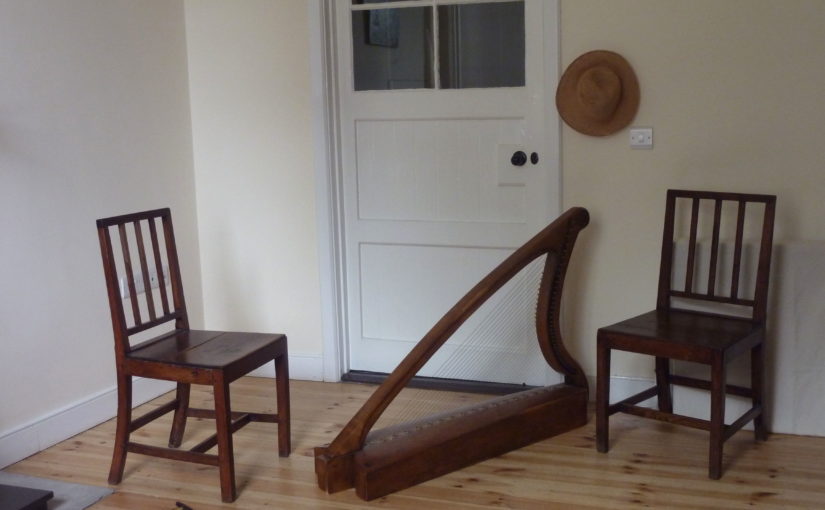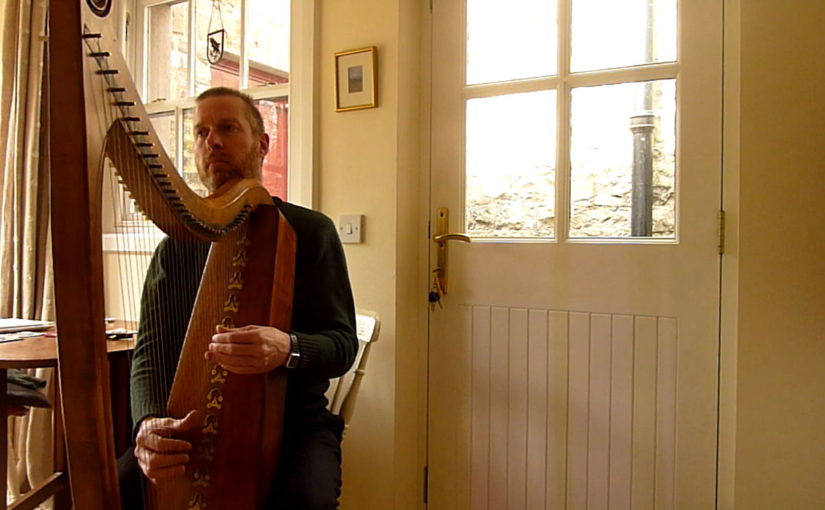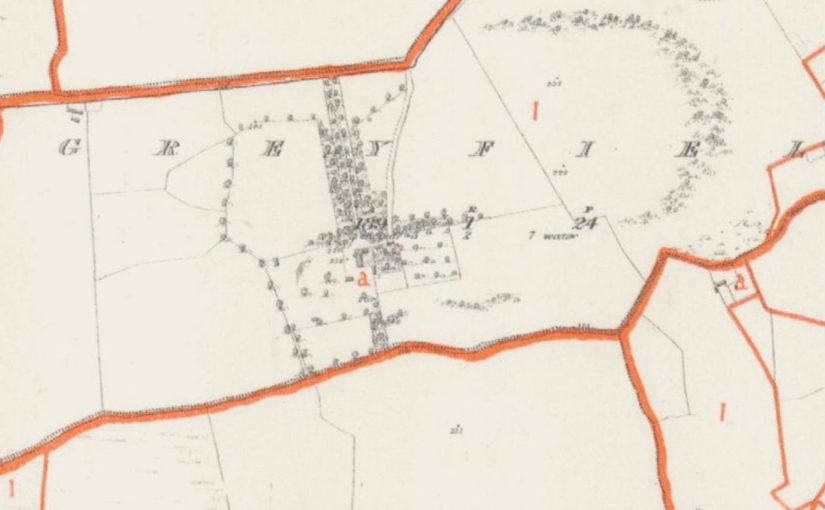I made a demonstration video of Tá Mé Mo Chodladh, from Edward Bunting’s live field transcription of the playing of old Irish harper Hugh Higgins in 1792.
Tag: Old Irish harp transcriptions project
This project was my main focus from Autumn 2019 through to Spring 2022. The idea was to identify, categorise, catalogue and analyse live transcription notations of traditional Irish harp performance practice.
So far, almost all of the live transcription notations I have identified were done by Edward Bunting, done between 1792 and about 1802. I have made a a tune-list spreadsheet which lists all of the live transcriptions I have so far identified, and PDF indexes and text-transcripts of the key transcription notebooks: Queen’s University Belfast, Special Collections MS4.29, MS4.33.1, and others.
Toby Peyton
I made a demonstration video of Planxty Toby Peyton, from Edward Bunting’s live field transcription of the playing of an old Irish harper in the 1790s.
Edward Dodwell
Edward Dodwell is another of the tunes in the “difficult” section of Edward Bunting’s field notebook between pages 14-40. You can see in my tune list spreadsheet that Ned Dodwell, on p.40, is at the very end of that section. In fact, since the next facing page from p.40 is p.43, I think we are missing a page here, and I think the missing page had a neat copy of Ned Dodwell.
Continue reading Edward DodwellDiarmaid Ó Dúda
I made a demonstration video of Diarmaid Ó Dúda (DOSB 37) based on the live field transcription written down by Edward Bunting in the 1790s.
Mrs. Anne MacDermot Roe
Edward Bunting made what looks like a live field transcription of a tune titled “Mrs McDermottroe” or “Nanny O Donnely” on p. 18/18/27/f8v of Queen’s University Belfast, Special Collections MS4.29. Bunting made an edited neat copy on the facing page, and he published a piano arrangement in his 1797 book (No.53, Anna ni ciarmuda ruaidh / Nanny McDermotroe / Carolan). There don’t appear to be any independent variants of this tune, so the only way to understand it is to analyse Bunting’s very unsatisfactory notations.
Continue reading Mrs. Anne MacDermot RoePlanxty Drury
I made a demonstration recording of Planxty Drury (DOSB 10) (DOSC 42) based on the live field transcription written down by Edward Bunting in the 1790s, from the performance of an old Irish harper.
Bunting’s collecting trips
As part of my Old Irish Harp Tunes Transcriptions Project, I have been looking at where and when Bunting collected tunes. My interactive map shows the dates and places he tells us he was collecting.
Continue reading Bunting’s collecting tripsBunting tune collecting statistics
As I work on the transcriptions project I am also assembling a spreadsheet of tunes and metadata to try and get a grip on attributions, variants, and titles.
Continue reading Bunting tune collecting statisticsOld Irish harp transcriptions project
I first got hold of a facsimile of Bunting ms29 (Queens University Belfast, Special Collections, MS4/29) when it was first published online at QUB Library web site, back in 2006, and I have been working from the facsimile ever since.
Continue reading Old Irish harp transcriptions project







